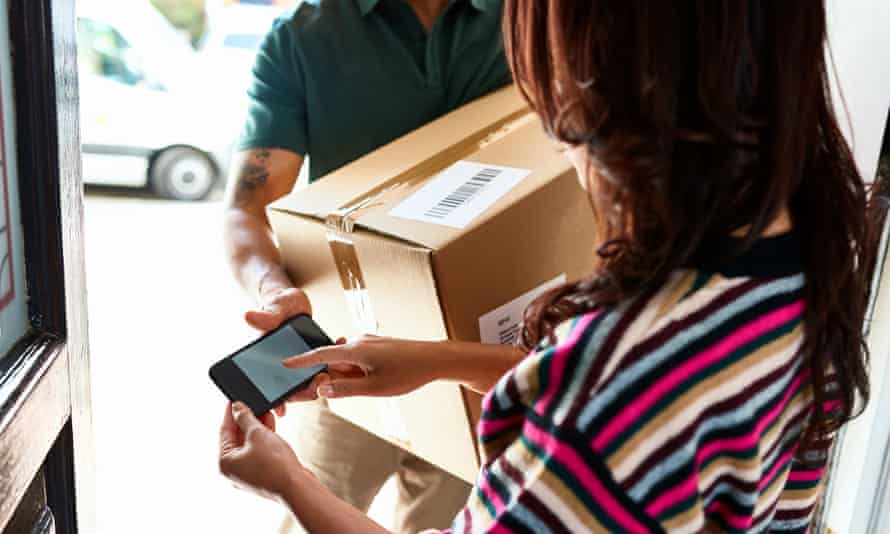
It used to be a rule of thumb that the less time someone had to wait for an online delivery, the more likely they were to commit to buying. But new ways of living and working mean that online norms are changing. For instance, next day delivery isn’t always optimum in a world of hybrid working that combines some days in the office and some days working from home.
Assumptions and practices have been upended by the growth of online shopping as a result of the Covid pandemic. Research by Barclaycard found that shopping online proved popular throughout 2021, growing 63% since 2019 compared with face-to-face retail spending, which saw a smaller rise of 0.6%. As a leading global payment business, Barclaycard processes nearly £1 in every £3 spent using credit and debit cards in the UK.
“Quick delivery is a modern expectation of shopping online,” says Nick Carroll, associate director of grocery and e-commerce research at Mintel. “This is something that the pandemic has only served to intensify.”
But retailers increasingly need to consider when shoppers would really like their order, which isn’t the same as assuming they would like it as soon as possible. “Speed is important, but equally as important is choice,” says Carroll. “Not all products are required immediately, but all deliveries are desired when the customer is available to receive them. That is why alongside speed efficiencies we are seeing more businesses look to provide more accurate delivery information, from real time updates to shortened delivery windows. Indeed, 30% of shoppers now say that exact delivery slots would encourage them to shop with one retailer over another.”
Paul Martin, head of retail at KPMG, says the key thing is to get better at knowing your customer: “It’s really important to understand who the customer is and why they are making a purchase decision. The big challenge is that most retailers don’t know enough about you as an individual consumer, and even if they do, they don’t always understand your shopping mission. That will be a big area of future investment, with all of the caveats around data protection.”
One way to potentially gain more insights is through the digitisation of receipts, with products such as Barclays Digital Receipts. According to one survey, more than 11bn receipts are produced in the UK each year, but more than 90% are lost, damaged or discarded. As well as being costly and environmentally damaging, these receipts are a missed opportunity for businesses to gain valuable data and insight about who their customers are and how they shop.
Once you better understand your customers, delivering on a customer’s specified date and during their desired time slot still requires speed – after all, efficiency begets timeliness.
For an order to turn up quickly, every aspect of the transaction needs to run seamlessly: from the payment process via a gateway to locating the stock in the warehouse and getting it out for delivery. Or to use retailer parlance: first mile, which involves getting hold of the stock from factories; middle mile, the bit in the warehouse, where orders are picked; and last mile, when the goods are on their way to someone’s home.
One way for retailers to speed up the process is to automate their warehouses and invest in robotics to get orders ready to ship more quickly, says Miya Knights, publisher of Retail Technology magazine. “We’re seeing robotic supply chain providers get lots of funding and grow incredibly quickly.”

Ultimately, however, speedy deliveries are all about being efficient, especially during the crucial last-mile stage. “We are seeing greater investment in smaller, but closer-to-shopper fulfilment centres, cutting down last-mile times,” says Carroll. “Stores are also increasingly being used as ways to shorten last-mile delivery times, with grocery in particular embracing courier-based platform partners to achieve this since the pandemic hit.”
Martin warns that the biggest challenges are usually expected in the final mile. “[Retailers] still need a delivery vehicle and a driver, and that is a fixed cost that is comparatively expensive. Using a third-party logistics fulfilment provider to service that final mile means handing over a very significant chunk of margin.”
Pioneering online retailers have shaped customer expectations when it comes to online shopping. For example, “Amazon raised expectations, and rapid delivery has become a competitive differentiator,” says Knights.
Another aspect retailers can get right more easily is to ensure the buying experience is simple for customers. A payment gateway should offer customers low-friction, user-friendly pathways to make easy, quick and secure payments. And this will ultimately help avoid abandoned shopping carts. As many as 70% are abandoned, according to research by the Baymard Institute, which analyses online user experiences. Not all of those will be lost purchases as some will be from people who were simply browsing or doing price comparisons. But a significant chunk of abandoned carts will still represent lost sales.
Since the start of 2021, almost 4 million UK consumers have actively used open banking-enabled products, such as Barclays Bank Pay, which lets customers pay straight from their bank account, instead of using card details. The product can help to simplify the payment journey and reduce cart abandonment, by making it easy for shoppers to access their online bank account from either their mobile or their desktop computer to finish their transaction.
Whether it’s the payment process or the logistics that lie behind delivery slots, it all comes back to tailoring your service to the customer.
To find out how Barclaycard could help your business, click here